At STH, whenever a new generation of server CPUs comes out, we always like to start with the top end SKU. The Supermicro A2SDi-H-TP4F is an embedded motherboard that sips power and houses something special. Onboard is the Intel Atom C3955 which is the top-end SKU of the new Intel Atom C3000 series codenamed “Denverton.” This new generation offers twice the cores and anywhere from 30-60% more performance per core than the C2000 generation. Beyond raw CPU cores, Supermicro has taken full advantage of the SoC’s capabilities to provide top-end networking and storage options on the platform.
Update 2017-26-08: Supermicro let us know that we tested a sample for validation. The shipping version of this motherboard will have the 16-core Intel Atom C3958 CPU. We will be updating our review soon with the shipping version. Here is our video overview of the updated version:
Test Configuration
Our test configuration is very similar to what we used for our Intel Atom C2000 series reviews.
- Motherboard: Supermicro A2SDi-H-TP4F
- CPU: Intel Atom C3955
- RAM: 4x 16GB DDR4-2400 RDIMMs (Micron)
- SSD: Intel DC S3710 400GB
- SATADOM: Supermicro 32GB SATADOM
- OSes: Windows Server 2016 Standard, Ubuntu Server 16.04.3 LTS, CentOS 7.3
We did get the chance to test the platform with Intel Optane 32GB, Toshiba XG3 512GB M.2 SSDs (Optane pictured) and 4x 32GB RDIMMs. Like the Intel Xeon D-1500 series, one can use up to 128GB in 4x 32GB ECC RDIMM configurations.
Supermicro A2SDi-H-TP4F Overview
Measuring 9.6″ x 9.6″ the Supermicro A2SDi-H-TP4F is a compact mITX motherboard. That means it will fit in a myriad of enclosures from small table top towers to short depth rackmount enclosures.
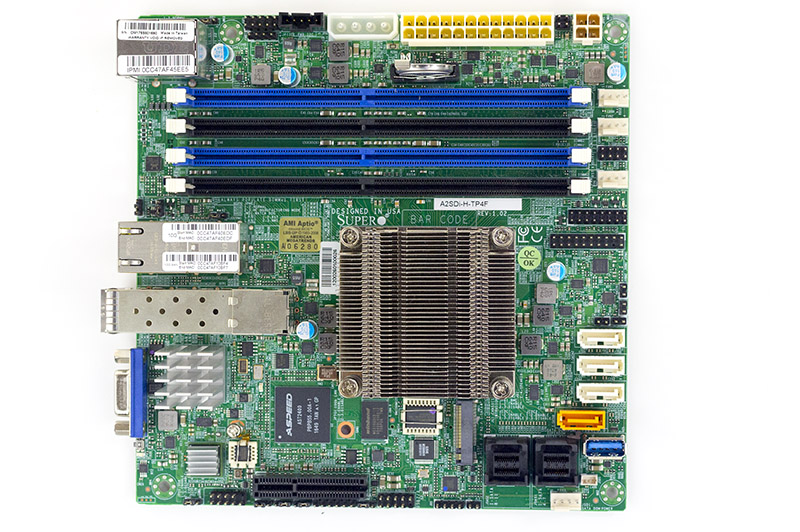
The one caveat we want to point out in this design is that it is intended to have chassis airflow over the heatsink. The Intel Atom C3955 is a powerful processor at 32W TDP it cannot be passively cooled by the stock heatsink.
On the subject of the CPU, here is a lscpu output:
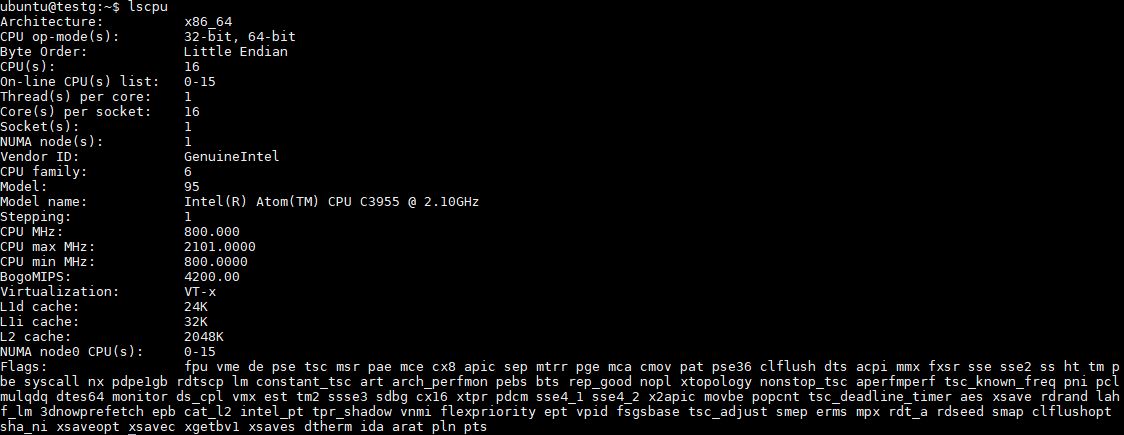
We wanted to highlight two virtualization features. The 16-core Atom is powerful enough for lightweight virtualization so its feature set needs to be more robust than the previous generation. One example of how the new generation excels here is that it supports VT-d for device pass-through.
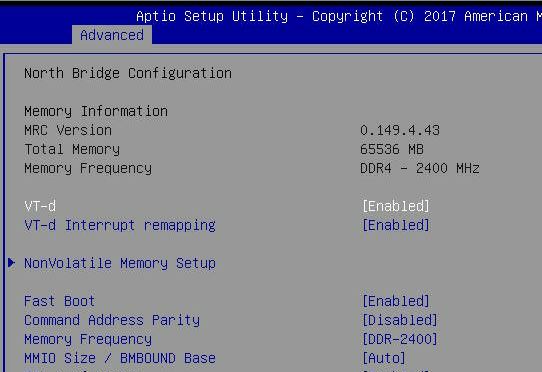
Likewise, there is SR-IOV support with the embedded Atom platform which is an excellent upgrade over previous generations:
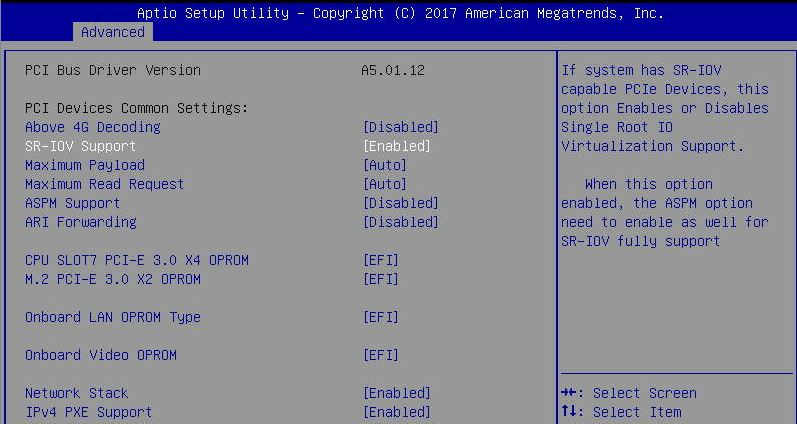
In terms of RAM, there are four DDR4 DIMM slots that accept ECC UDIMMs and RDIMMs. We suggest using RDIMMs if possible. That is a major upgrade over the previous generation as it makes 128GB easily obtainable.
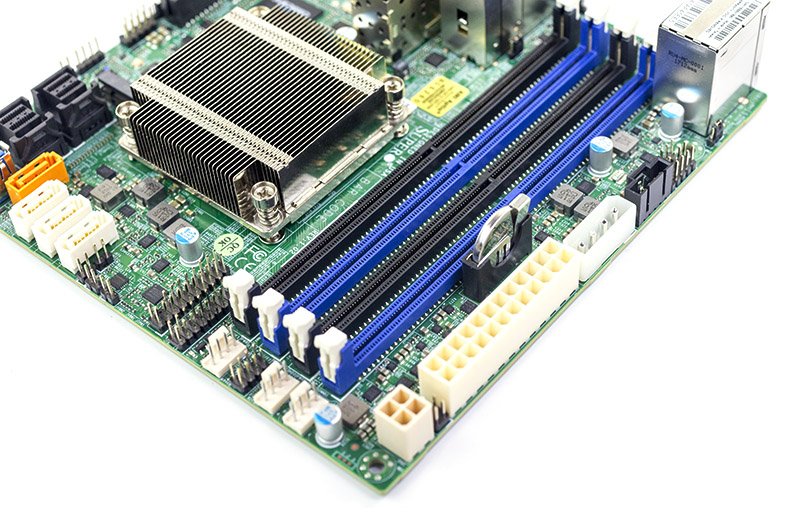
Before we proceed, power has two main options. First, one can use a standard ATX 24-pin power connector. Given this is such a low power platform, it will operate without issue even with a 150W to 200W PSU and a 20-pin power connector. Alternatively, one can use a DC power connection which is the four pin power header.
Moving along to the storage, the motherboard has something special. There are two SFF-8643 headers that each can handle 4x SATA III 6.0gbps ports. Further, there are four standard 7-pin headers, one is the orange connector Supermicro uses for SATA DOMs with power. Augmenting these 12x SATA III ports is a USB 3.0 Type-A internal header popular for embedded OS installations. The previous generation Intel Atom C2000 had two SATA III 6.0gbps ports and four SATA II 3.0gbps ports so this is a massive improvement.
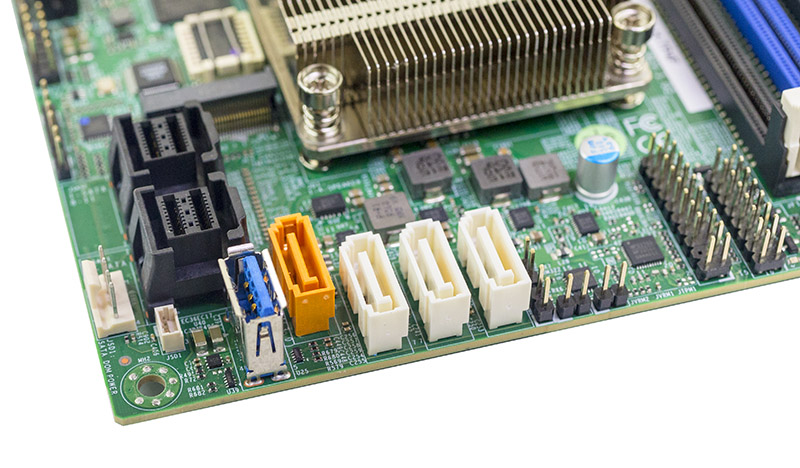
The SFF-8643 ports provide features such as SATA LED so and SGPIO so your enclosure backplanes can correctly display status LEDs.
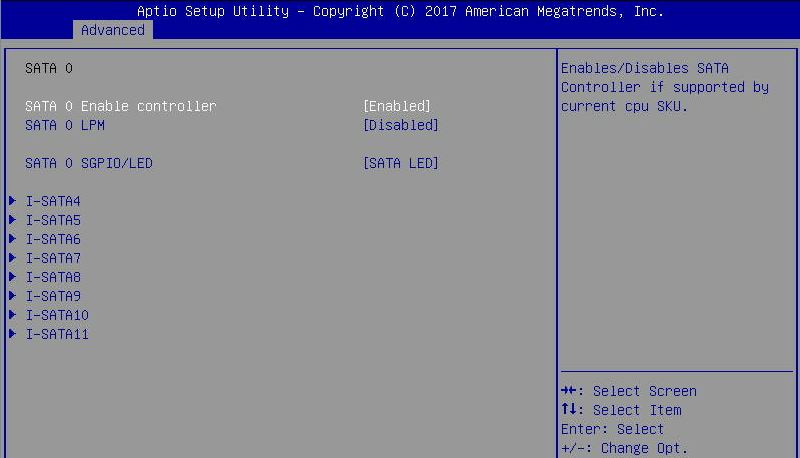
While the SATA ports may be great for boot devices and traditional hard drives, there are new form factors available. For example, m.2 NVMe drives are extremely popular. The Supermicro A2SDi-H-TP4F can handle up to M.2 2280 size SSDs. Along with the M.2 slot there is a PCIe 3.0 x4 slot that is open ended allowing longer cards to be used. Previous generation Intel Atom C2000 products could only utilize PCIe 2.0 so this is a significant upgrade.
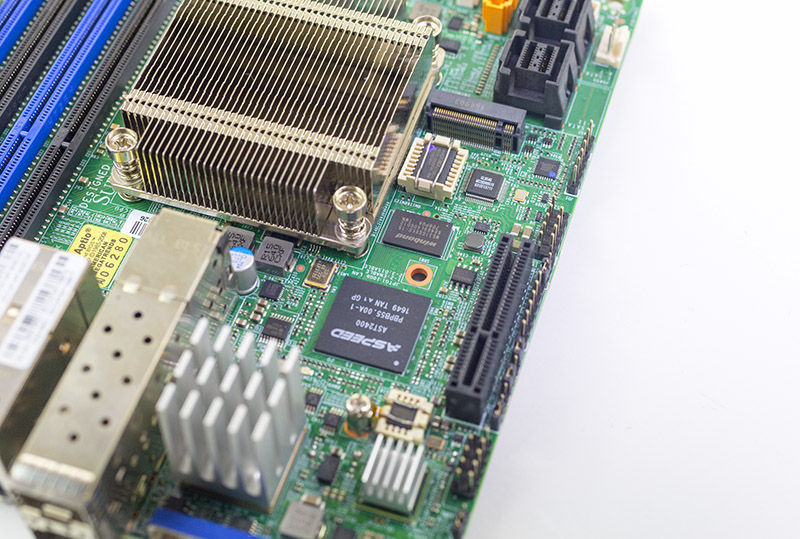
The rear I/O is an array of two USB ports along with an out of band management Gigabit Ethernet port. There is also a VGA header.
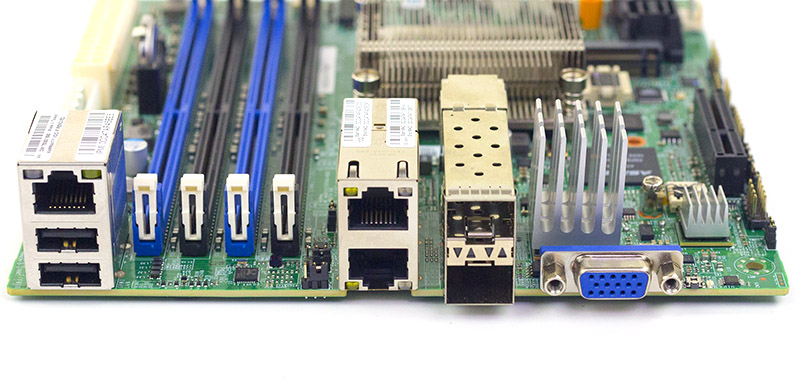
The real story in terms of I/O here are the four 10 gigabit Ethernet ports. There are two 10Gbase-T ports and two SFP+ ports so one can use different networking interfaces. For those STsalivatingsalavating over a high-speed Atom CPU with higher-speed networking, this is it. The Intel Atom C3000 series requires external PHYs which you can see covered by heatsinks behind the VGA port (10Gbase-T is the larger of the two.) The 4x 10GbE configuration is only available on the highest end SKUs. Here is an Intel Atom C3000 series SKU list and comparison for your reference.
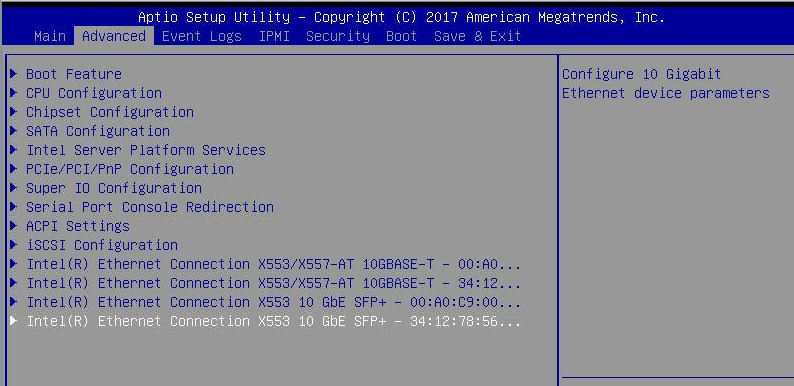
Networking is provided by the Intel X553/ X557 NICs. If you are using the latest Intel drivers then support will be in the OS. If you are using an older OS, you will need to upgrade to newer OS drivers. See our Day 0 with Intel Atom C3000: Getting Intel X553 NICs Working piece.
Here is a view of the platform with four DIMMs installed along with a M.2 drive. In this case we are using an Intel Optane m.2 drive. Far from a supported configuration, but since it is a NVMe device, it does work. We are using the m.2 device instead of the Optane P4800X PCIe we tested months ago because using several dollar per GB storage on this platform is not the best balance. We are testing the m.2 version to see if that is a good caching device for the server.
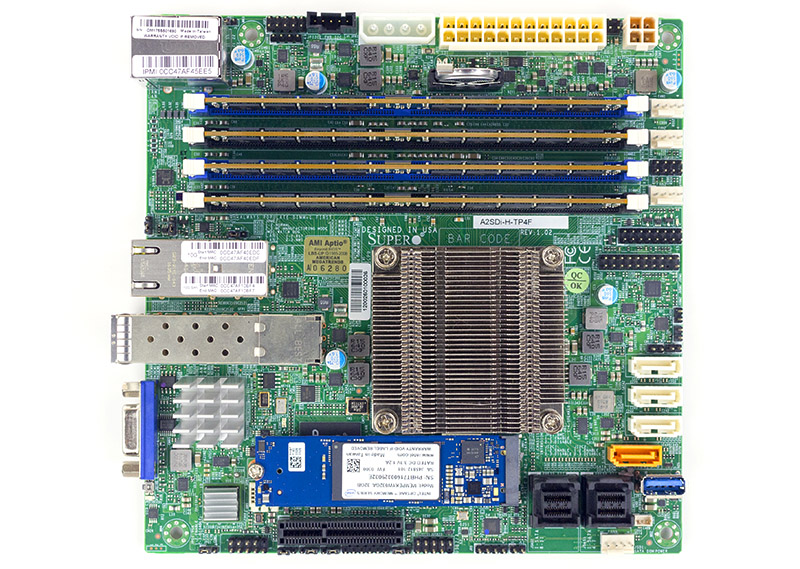
The Intel Atom C3955 has the maximum High-Speed I/O (HSIO) lanes and networking options found in the entire Intel Atom C3000 series. The Supermicro A2SDI-H-TP4F utilizes every ounce of these features.
On the next page we will have performance, power consumption, and our final thoughts.

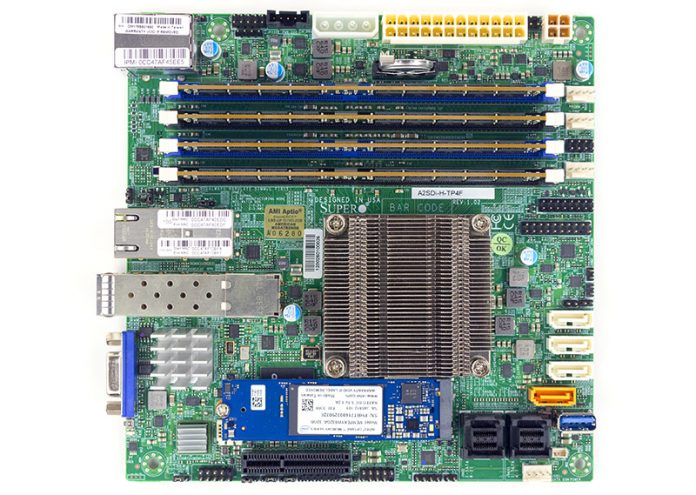



The Supermicro web page for that motherboard clearly states that the embedded CPU is a C3958, not a C3955. It features Quick Assist, but runs at a 100MHz lower base frequency.
Reference :
https://www.supermicro.com/products/motherboard/atom/A2SDi-H-TP4F.cfm
Coug – we got a version with a different CPU. lscpu output and motherboard numbering are posted in the review.
Great review. Could you please add numbers from ARM microservers offering for comparison?
Can you test if the board is compatible with SmartOS?
Nice review. I don’t see any AVX* features listed in `lscpu`. Can you double check which processors support AVX*? Also, is PCI passthrough now supported with the whole C3000 line? It wasn’t supported on C2000.
Hi Glen – as mentioned after the lscpu output, this is not a supported feature on these CPUs. They are not targeted at AVX workloads.
I would like to see a comparison between the c3000 and the Xeon D15xxN platforms. My use case is networking appliances (firewall / IPS / ids)
Are those u.2 connectors by the internal usb A? Can’t find them in the spec…
SFF-8643 but doing 4x SATA not SAS or PCIe
Is the X557 onboard nics compatible with 802.3bz ?
Supermicro says max RDIMM capacity is 128gb, but Intel ARK states 256gb.
Do you know if 64gb sticks works Patrick?
Can you do a review with this MB on FreeNAS ? Would be great to see the performance, doing a 12 bay x 10Tb NAS + 128Gb of ECC Ram.
Daniel – FreeNAS 11.0u2 does not support the Intel X553 out of the box See: FreeNAS 11.0u2 and Intel Atom C3000 X553 10GbE Testing – it will likely get fixed in a future update and we will revisit at that time.
@Davi have not had a chance to test on 802.3bz. 10GbE is now our low speed network. On the 64GB RDIMM the set we had did not work. Looking to the SM HCL to see if that gets updated with supported 64GB modules in the future.
Is there a board that offers SAS to the drives, known to anyone please?
Really appreciate if anyone can give directions!
It does not. Only SATA.
Any word on SmartOS?
Does anyone use SmartOS? It is garbage that HPE picked up. We try it every year for clients. Every year we find it unusable.
Can you do a comparison for video transcoding using Plex or such vs the Xeon D-15xx platform?
Would love to see some C3858 coverage to be honest, anything planned?
Seconded request for transcoding benchmarks vs Xeon D, and more transcoding benchmark results in general.
+1 for transcoding benchmarks vs Xeon D, and also a review of the C3750 may be really cool (versus the C2750, as it is it’s small brother).
+1 for SmartOS compatibility testing…
SmartOS testing please
hi,
Can this Atom run SCCM/SQL/ GNS3 with no probleme?
As part of a school thesis for research I’ve got to search sites with relevant information on given topic and provide them to teacher our opinion and the article. Your post helped me a lot. This is my first time see here. From the tons of comments on your articles, I guess I’m not just one having all the enjoyment right here! I just couldn’t leave your website before telling you that I truly enjoyed the best high quality articles you present for your visitors? Will be returning again frequently to check up on brand new posts.
Can the heatsink be replaced with an active fan for non-rack use? Is it a standard mounting pattern/etc?
Where to buy this ? online
I’m wondering if it works in UnRaid.
What the hell is that date format: “2017-26-08”?
Yegads, trust Americans to take a standard that is unambiguous everywhere (ISO-8601), and completely screw it up.
Hi,
do you know which 64 GB ECC RAM modules work with this motherboard?
Does it support LRDIMM?